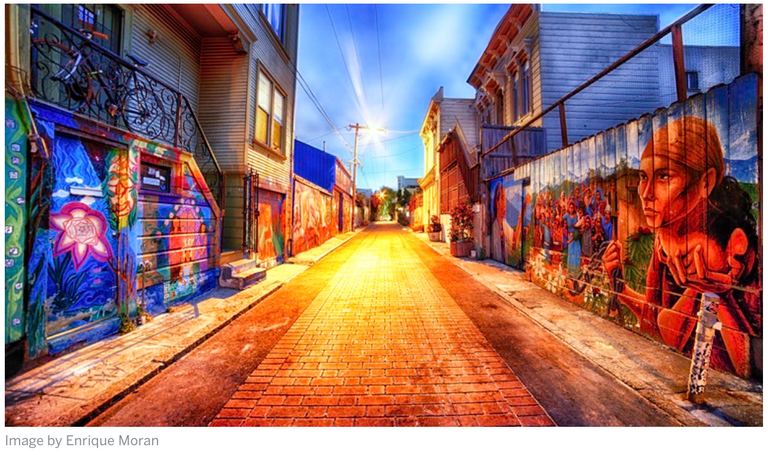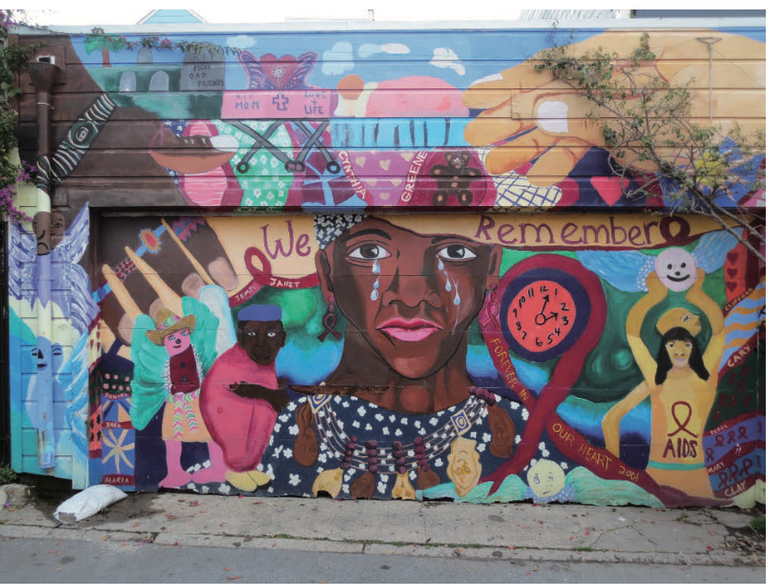
The history of Balmy Alley is seeped in a rich amalgamation of mural movements that came before it. To understand its roots, we must go back in time to the Mexican Mural Movement of the 1920s. After the Mexican Revolution of 1910-1917, the new government wanted to educate its rural and illiterate population about the struggles and achievements of the revolution. Thus emerged Los Tres Grandes : Diego Rivera, Jose Clemente Orozco, and David Alfaro Siqueiros - artists who went on to influence mural arts in subsequent eras.
Fast forward to 1960s California. At the intersection of the American Civil Rights Movement, the Black Power Movement, and the Hippie Movement, emerged a powerful group of Latin Americans who called themselves the Chicanos. They sought to reclaim their ethnic identity from the second-class image imposed on them by the white majority, and to reject the sentiment that assimilation was the inevitable trajectory of their people. Murals were a form of nonviolent expression of their ethnic pride as well as their discontent with social circumstances of Latinos in the US.
This brings us to the Mission District of San Francisco, to a lone alleyway off 24th Street and Garfield Square. The earliest murals appeared in 1972, painted by Maria Galivez and children from a local child center. In 1973, Patricia Rodriquez and Graciela Carillo added to the growing repertoire of stories told on the walls along the road. As their team expanded, they became known as Las Mujeres Muralistas . The wave of murals that followed celebrated indigenous Central American cultures as well as protested US intervention at the time (specific topics included the Nicaraguan revolution, Óscar Romero, and the Guatemalan civil war). The depiction of these terrors, hopes and dreams reclaimed agency over how they defined their misrepresented lives, and how they defined the community they wanted to see.
Today, Balmy Alley is accessible to people of all ages and passersby interact with the space without even being aware they are doing so. The murals highlight the fear of a community that does not want to lose its identity in the harsh realities of the modern world - police harassment, rising inequality, and the trap of consumer culture. The everyday scenes make these anxieties all the more real because these problems are characteristic of the lived experiences of people in the community. However, the utopian ideal prevails throughout. Many images depict the reward of hard work and family values, and the visions of a diasporan community that is establishing roots in this “home away from home”. We can infer from these features that the artists behind these works dream of a society founded on the values of family, community, and peace and justice. “Perfection” to them is not the absence of hurt, but the ability to overcome it with the strength we derive from each other.
Balmy Alley is a space of juxtaposition, as it reflects the utopian ideals and dystopian realities around us. On the one side, one might see a section of the colorful mural, “The Culture Contains the Seed of Resistance that Blossoms into the Flower of Liberation” (Miranda Bergman and O’Brien Thiele, 1984). Yet immediately on the other, one is faced with the tears shed for those who have lost their lives to AIDS in “Those We Love, We Remember” (Edythe Boone, 1995).

The Culture Contains the Seed of Resistance that Blossoms into the Flower of Liberation (section), Miranda Bergman and O’Brien Thiele, 1984. Balmy Alley.

Those We Love, We Remember, Edythe Boone, 1995. Balmy Alley.
As an ephemeral art work, the physicality of the space reflects the changing aspects of community. In fast-paced modern America, in the heart of one of the most technologically advanced cities in the world, this is a pocket of collective reflection that airs the silent voices that tell the community’s past, present and future.
Congratulations @rebeccamqamelo! You have completed some achievement on Steemit and have been rewarded with new badge(s) :
Click on any badge to view your own Board of Honor on SteemitBoard.
For more information about SteemitBoard, click here
If you no longer want to receive notifications, reply to this comment with the word
STOP